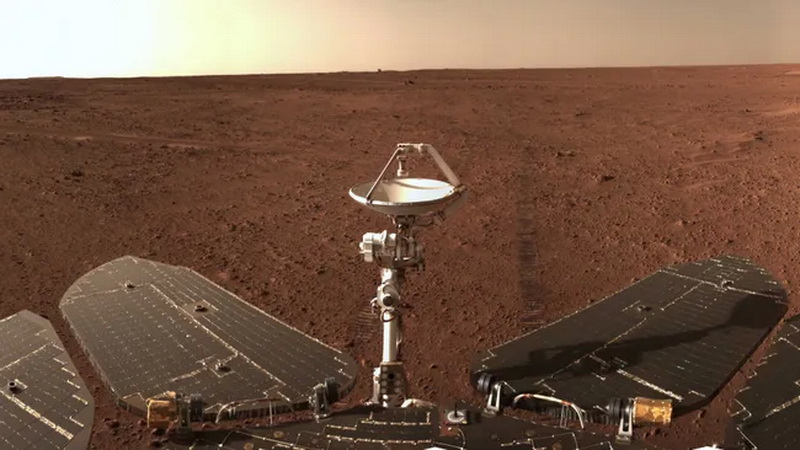China has postponed the launch of its Tianwen-3 mission to collect and return Martian soil samples to 2028. This is two years earlier than originally planned. It is now expected that China will deliver samples of Martian soil to Earth as early as 2031.

Chinese Mars rover “Zhuzhong”. Image source: CNSA
Speaking last week at the Second International Conference on Deep Space Exploration in Anhui Province, China, Liu Jizhong, chief designer of the Tianwen-3 mission, said the project involves two space launches. As part of the first, it is planned to send a landing module and a two-stage take-off vehicle, and during the second launch, an orbital vehicle and a module returning to Earth are planned.
As part of the Tianwen-3 mission, China plans to land a device with a drill on the surface of Mars, collect at least 500 grams of Martian soil samples and return them to Earth for further study. These samples can tell us about possible life on Mars in the past and about the evolution of the planet’s climate. The mission is also considering sending a foldable autonomous helicopter and a six-legged robot to collect samples far from the landing site.
«Now there is a real chance that China will be able to return samples from Mars before the United States,” Quentin Parker, an astrophysicist at the University of Hong Kong, was quoted as saying by the Malaysian online newspaper Malay Mail.
According to the CGTN news channel of the state-run China Global Television Network in Beijing, at a recent deep space exploration conference, Liu Jizhong also noted that the Tianwen-3 mission will include international payloads and that China plans to share returned Martian soil samples with scientists around the world. to the world. Liu did not specify when the samples might be delivered to Earth. Officials previously said the round-trip mission would take about three years, which would put the soil back on Earth around 2031 if the launch takes place in 2028.
The Chinese mission’s updated schedule suggests that Martian soil samples could be returned to Earth well ahead of schedule under the joint NASA-European Space Agency (ESA) Mars Sample Return (MSR) program. The project is reportedly in need of a major overhaul as significant cost overruns and schedule slippages have called the original mission structure into question. NASA chief Bill Nelson estimates that the MSR mission’s $11 billion cost is too high and the mission itself is too complex. However, he added that “the return of samples no earlier than 2040 is an unacceptably long time.”
In June, NASA awarded $1.5 million in contracts to seven companies, including SpaceX, Blue Origin, Lockheed Martin and Northrop Grumman, to develop the idea for a simpler, less expensive and less risky alternative to the existing NASA-ESA joint mission architecture.
Meanwhile, scientists continue to emphasize the scientific value of returning Martian soil samples to Earth as part of the MSR mission. By the way, they were previously collected by NASA’s Perseverance rover. These samples contain both fine- and coarse-grained sandstone and mudstone deposits, which scientists believe could provide important clues about the chemistry of the water that deposited these sediments billions of years ago, as well as possibly providing evidence of microbial life that once existed. on Mars.